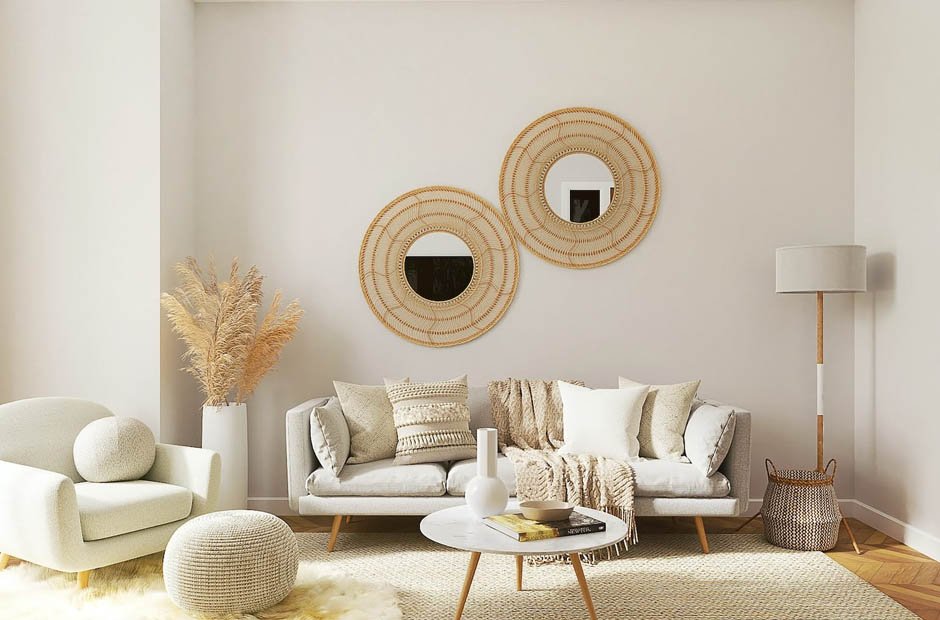In today’s fast-paced world, mental well-being has become a paramount concern. Amidst this, the role of our living spaces in influencing our mental health is often overlooked. The design of our homes – an extension of our personal space – plays a crucial role in how we feel, think, and behave. This article delves into the intricate relationship between interior design and mental well-being, focusing on three key aspects: color psychology, spatial arrangement, and the integration of natural elements.
The Psychology of Colors
Color psychology is a powerful tool in interior design, profoundly impacting our mood and emotions. Different colors can evoke different responses; for instance, blue is often associated with calmness and serenity, making it a popular choice for bedrooms. In contrast, warmer tones like orange and yellow can energize a space, making them ideal for living areas where social interaction occurs.
Research has shown that certain colors can have therapeutic effects. For example, green, reminiscent of nature, can reduce stress and promote relaxation. Incorporating these colors into home decor not only enhances the aesthetic appeal but also contributes positively to our mental health.
Spatial Arrangement: More Than Just Furniture Placement
The spatial arrangement of a home goes beyond mere furniture placement. It’s about creating a flow that aligns with our daily routines and enhances our sense of well-being. A cluttered and disorganized space can lead to feelings of anxiety and overwhelm, while a well-arranged space promotes clarity and peace of mind.
An effective spatial arrangement considers factors like the amount of natural light, the purpose of each area, and the ease of movement within the space. For example, creating a dedicated nook for relaxation or meditation can serve as a peaceful retreat within the home. Similarly, ensuring that workspaces are separate from rest areas can help in maintaining a healthy work-life balance.
Embracing Natural Elements
Incorporating natural elements into home design is not just a trend but a practice deeply rooted in enhancing mental well-being. Elements like indoor plants, natural light, and materials like wood and stone can bring a sense of the outdoors inside, creating a more calming and restorative environment.
Studies have shown that exposure to natural elements can reduce stress, improve mood, and even enhance cognitive function. For instance, a room with ample natural light can boost serotonin levels, leading to improved mood and energy. Plants not only add aesthetic value but also improve air quality, which can have a positive impact on overall health.
Practical Tips for Mindful Home Design
- Choose Colors Wisely: Select colors that resonate with the desired mood for each room. Soft, neutral tones can create a calming effect, while vibrant hues can stimulate creativity and energy.
- Maximize Natural Light: Use light window treatments to allow natural light to flow freely into the space. Mirrors can also be strategically placed to reflect light and create a sense of openness.
- Incorporate Greenery: Even in small spaces, the presence of plants can have a significant impact. Choose low-maintenance indoor plants to bring life and freshness into your home.
- Create Dedicated Spaces: Designate areas for specific activities, such as a quiet reading corner or a vibrant socializing area, to establish clear mental boundaries within your home.
- Declutter Regularly: A tidy space promotes a tidy mind. Regular decluttering and organization can significantly reduce stress and improve mental clarity.
Conclusion
In conclusion, the design of our homes plays a crucial role in our mental health and well-being. By thoughtfully considering aspects like color choices, spatial arrangement, and the inclusion of natural elements, we can create living spaces that not only look good but also feel good. As we continue to navigate the complexities of modern life, turning our homes into sanctuaries of mental wellness becomes not just a desire, but a necessity.
For more insights and ideas, explore our extensive collection of articles about decor, which delve deeper into the world of interior design and its impact on mental health.
















